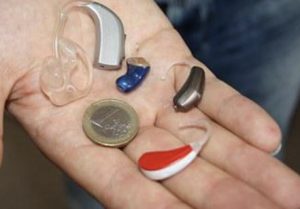There are many types of hearing tests. You might have a hard time determining which is the right one for you. This article will cover the Rinne and Weber tests, Speech audiogram, Otoacoustic emission testing, and Otoscopy. If you want to learn more, check out the links below. But first, know what to expect from a hearing test. This test isn’t as complicated as it sounds.
Rinne and Weber tests
 The Rinne and Weber hearing test combines the results of each other to determine if you have a hearing problem. Both tests use a vibrating tuning fork with a 256 or 512 Hz frequency. Patients are asked to place the fork in the centre of their forehead, above their upper lip, and over their teeth. They are asked to report which ear hears the vibrations louder.
The Rinne and Weber hearing test combines the results of each other to determine if you have a hearing problem. Both tests use a vibrating tuning fork with a 256 or 512 Hz frequency. Patients are asked to place the fork in the centre of their forehead, above their upper lip, and over their teeth. They are asked to report which ear hears the vibrations louder.
Speech audiogram
The results of a speech audiogram can be viewed in either a graph or table format. The table format displays the SRT, the distance in dBs from the speech curve crossing 50%. The graph displays the SRT in dBs and indicates the amount of speech to be turned up to compensate for the hearing loss. The graphs use two different curves, the m-curve and the s-curve.
Otoacoustic emission testing
The Otoacoustic Emission (OAE) hearing test is an easy, non-invasive way to assess the condition of the cochlea in newborns, children, and adults. In addition, the test is highly reliable and suitable for diagnostic purposes. While newborn hearing screening is state-mandated in the United States, periodic early childhood hearing screening programs are also beginning to incorporate this technology. Ultimately, OAEs will determine whether a child has cochlear hearing loss or other auditory deterioration.
Otoscopy
The otoscopy hearing test is a common part of an OSCE. A hearing specialist usually performs this exam. They use a special device called an otoscope to look into the ear canal and tympanic membrane to evaluate the audiologist’s abilities. A physician can perform this test on both sexes. A hearing professional will ask the patient a series of questions to get a more accurate diagnosis of the patient’s hearing ability. For more information, visit https://www.sashc.com.au/hearing-tests-assessments-adelaide.
Otoscopy and immittance tests
While immittance measurements have been used for decades in clinical practice, there are no universally applicable norms. One reason for this may be the inattention to many procedural variables, including the effects of age. Several studies have demonstrated that patients with conductive hearing loss respond differently to different sounds. A new ASHA working group paper describes the differences between immittance measurements and those done for other hearing disorders.
Tympanometry
The tympanometer is a small device that uses air pressure changes to produce sounds inside the ear. It records the response of the eardrum to these tones. A person must remain still during the test. Any movement may affect the accuracy of the results. This test is recommended for adults and children of all ages, though it can be challenging for small babies. The results of this test will reveal if the middle ear is functioning properly.
Pure-tone test
A pure-tone hearing test is a clinical examination in which the audiologist evaluates the patient’s ability to hear sounds. During the test, the audiologist uses an audiometer to record the results. The results are registered on an audiogram, which reveals the hearing loss in the patient. The hearing specialist can determine the most effective treatment based on the audiogram.
What is a hearing test? A hearing test is a medical procedure that measures the sensitivity of the sense of sound. An audiologist uses an audiometer to measure your hearing sensitivity at various frequencies. If you have a hearing problem, you should schedule a hearing test to determine if further treatment is needed. However, it is important to note that the results of a hearing test may vary from one person to the next.
Children are typically tested using a voluntary or conventional technique to test the range of frequencies. These tests are conducted through headphones. You’ll be asked to respond to various sounds during the audiogram through a button or raised hand. Your health professional will then plot the test results on an audiogram graph. Finally, the results of the hearing test will be explained to you. If you have any questions or concerns after the test, ask your audiologist to give you copies of the results. For more information, visit https://www.sashc.com.au/hearing-tests-assessments-adelaide.